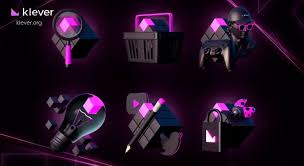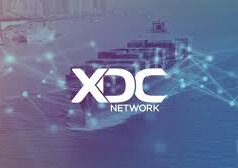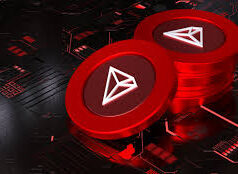The blockchain world is full of platforms vying for attention, but Klever is carving out a unique space with its user-first approach and robust technology. Launched in 2020, Klever Blockchain is a Layer 1 network designed to make decentralized applications (dApps), financial tools, and digital asset management accessible to everyone—from crypto newbies to seasoned developers. With features like low-cost transactions, no-code dApp creation, and a vibrant ecosystem supporting over 10,000 tokens, Klever is redefining what it means to interact with blockchain. So, what makes Klever stand out, and why is it gaining traction in 2025? Let’s dive into the details.
The Foundation: What Is Klever Blockchain?
At its core, Klever is a public Layer 1 blockchain focused on simplicity, security, and scalability. Founded by a team led by CEO Dio Ianakiara, Klever started as a wallet solution in 2017 (originally TronWalletMe) and has since evolved into a comprehensive ecosystem. It supports a range of services, including the Klever Wallet, Klever Swap, and KleverScan, a blockchain explorer for tracking transactions and accounts. The native token, KLV, powers the network, enabling everything from transaction fees to staking rewards and dApp development.
Klever’s mission is to democratize blockchain. Its low-code environment lets users create dApps—called Kapps (Klever apps)—without needing to be coding wizards. With support for over 40 blockchains, including Bitcoin, Ethereum, and Polygon, Klever is a one-stop shop for managing digital assets. As of June 2025, the platform boasts over 4 million users across 190 countries, a testament to its global appeal and user-friendly design.
Breaking Barriers: Making Blockchain Accessible
Let’s swap “Why This Matters” for The Heart of Klever’s Vision. Blockchain can feel like an exclusive club, with complex jargon and steep learning curves. Klever flips this on its head. Its no-code tools, like prebuilt smart contracts, let anyone—from small business owners to hobbyists—launch dApps for things like NFTs, stablecoins, or micropayments. Want to create a token or set up a marketplace? KleverScan’s interface makes it as easy as filling out a form, no programming required.
The platform’s low fees are another game-changer. With transaction costs significantly lower than those on networks like Ethereum, Klever is ideal for retail users and developers alike. It can handle 3,000 transactions per second (TPS), making it fast enough for high-demand use cases like DeFi and gaming. Posts on X praise Klever’s intuitive UI, with users calling it “an all-in-one crypto experience with a touch of elegance.” This focus on ease of use is why Klever Wallet has become a go-to for 3 million+ users, especially in regions like Nigeria where financial inclusion is a priority.
The Tools: Klever’s Ecosystem in Action
Klever’s ecosystem is like a Swiss Army knife for crypto. The Klever Wallet supports over 10,000 tokens and NFTs, letting users store, swap, and stake assets across multiple blockchains without KYC hassles. Klever Swap offers seamless cross-chain trading, while KleverSafe, a hardware wallet, provides top-tier security with waterproof durability. Developers can tap into Klever OS, a wallet operating system that integrates smart wallets into apps, clouds, or even wearables.
The Klever Coin (KLV) is the glue holding it all together. With a circulating supply of 8.88 billion out of a 10 billion max, KLV is used for transaction fees, staking, and participating in crowdfunding for new projects. Despite a current price of $0.0023 (down 99% from its 2021 high of $0.16), its $20.07 million market cap reflects steady community trust. Staking KLV lets users earn passive income while securing the network, and developers use it to deploy dApps, making it a versatile utility token.
The Challenges: Hurdles on the Horizon
No blockchain is without its struggles. Klever faces stiff competition from established players like Ethereum and Solana, which boast larger ecosystems and more developer activity. Some X users have raised concerns about the KLV token’s price stagnation, with one noting that its -3% drop in a single day reflects broader market challenges. Scaling to maintain low fees while handling growing transaction volumes is another hurdle, though Klever’s 3,000 TPS capacity is a strong start.
Security is also critical. While Klever emphasizes robust encryption and KleverSafe’s hardware wallet, any blockchain handling millions of transactions needs constant vigilance against hacks. The lack of detailed public audits in recent updates could raise eyebrows among cautious users. Still, the team’s track record—led by experts like CTO Bruno Campos and blockchain researcher Fernando Sobreira—suggests a commitment to addressing these risks.
The Momentum: Why Klever Is Gaining Ground
Instead of “What’s Next,” let’s call this The Path Forward. Klever’s $20 million investment from GEM Digital Limited in 2024 is fueling its growth, with plans to expand Web3 adoption and enhance its ecosystem. The KVM TestNet lets developers experiment with high-speed smart contracts, and the community-driven approach—fueled by user feedback—keeps Klever evolving. Innovative projects, from blockchain games to financial tools, are choosing Klever for its speed and low costs, positioning it as a hub for Web3 innovation.
Events like the Camp Network’s Campground: Seoul in July 2025 show how Klever’s model aligns with broader trends in decentralized tech. While not directly tied to Camp, Klever’s focus on accessibility mirrors efforts to onboard creators into Web3, suggesting potential for future collaborations. The team’s vision of making finance “intuitive and inclusive” is resonating, especially in emerging markets where crypto can bridge financial gaps.
The Big Picture: Klever’s Role in the Future
Instead of “Final Thoughts,” let’s say The Horizon Ahead. Klever Blockchain is more than a platform—it’s a movement to make decentralized tech a part of everyday life. By prioritizing low fees, no-code tools, and a user-friendly ecosystem, Klever is lowering the barriers that keep people from embracing crypto. Whether you’re a developer building a DeFi app, an artist minting NFTs, or a user staking KLV for rewards, Klever offers a seamless way to engage with Web3.
The road ahead isn’t without challenges—competition, price volatility, and security demands will test Klever’s resilience. But with 4 million users, a $20 million investment, and a growing suite of tools, Klever is well-positioned to thrive. Want to explore it yourself? Check out klever.io or kleverscan.org to dive into the ecosystem. In a world where blockchain can feel daunting, Klever is making it feel like home.
Sources: klever.io, kleverscan.org, coinmarketcap.com, linkedin.com, coinbase.com, X posts



























